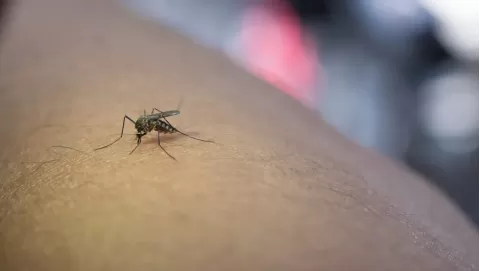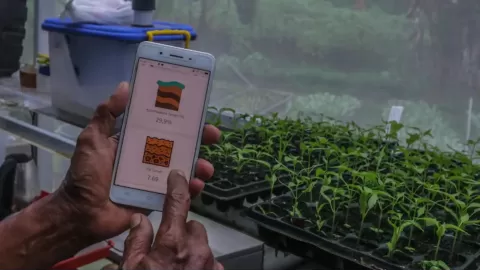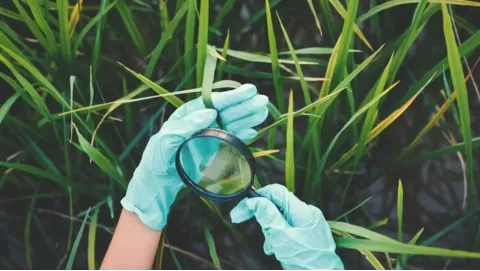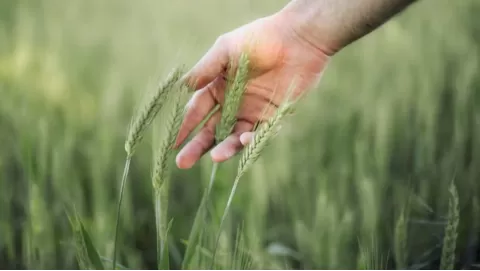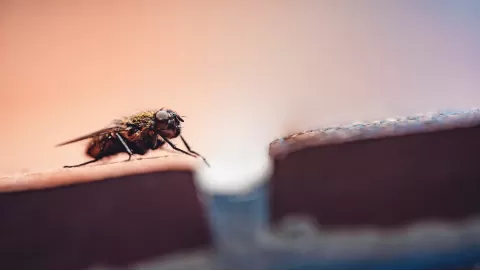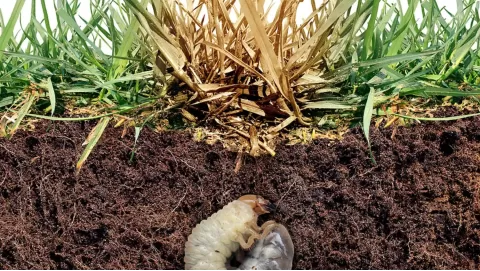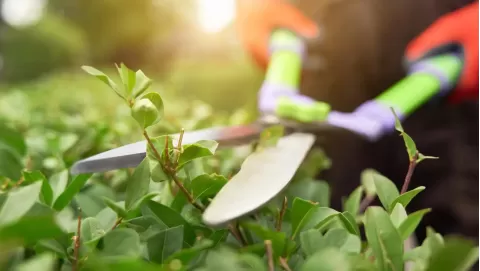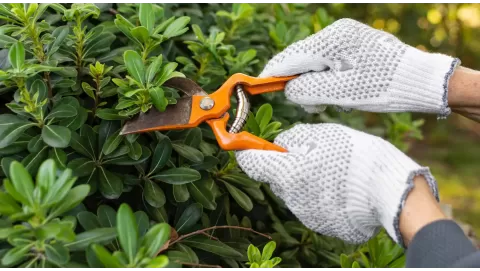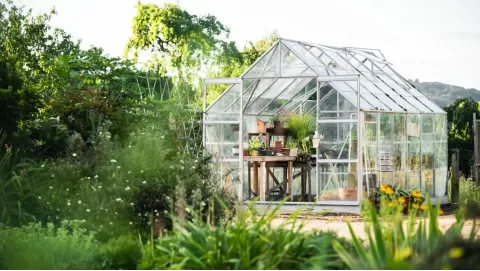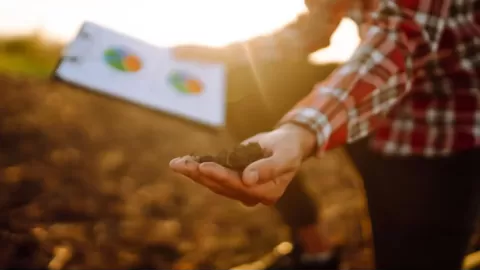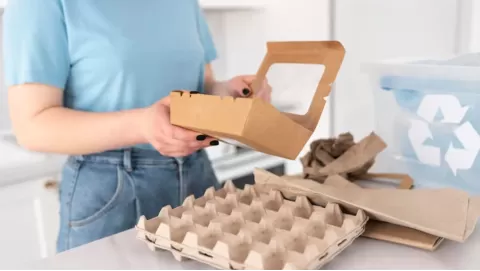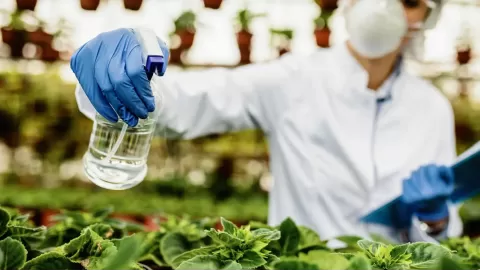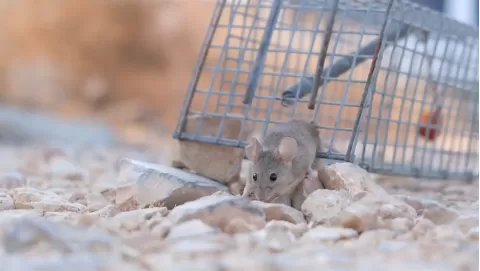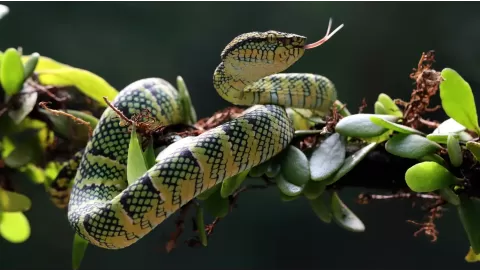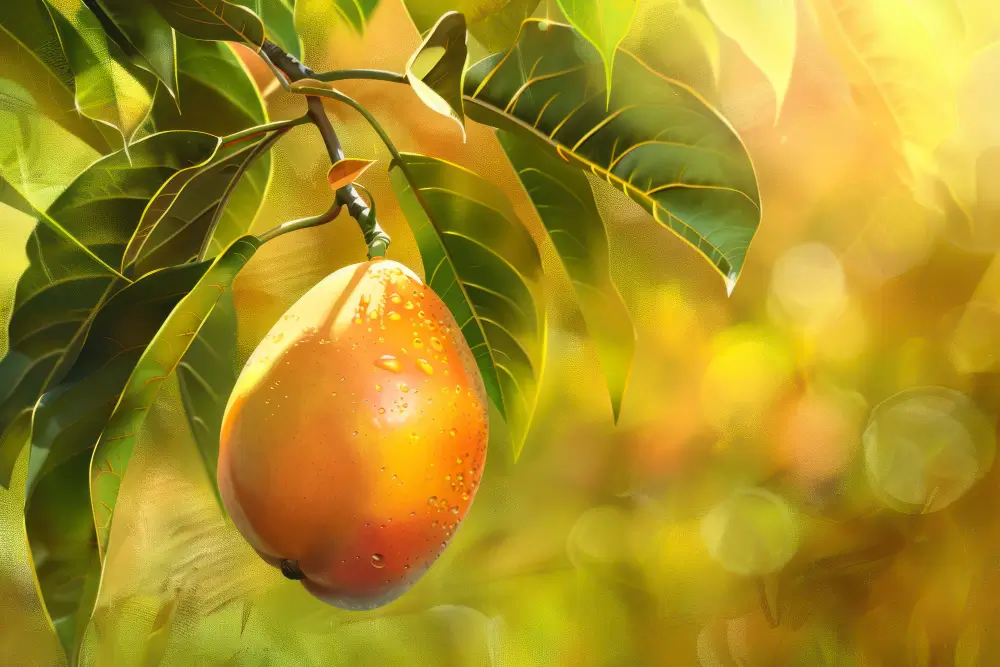
How to plant a Mango Seed: Turn a store-bought mango into a thriving tree
The mango, Mangifera indica, has been cultivated for at least 4000 years in South and Southeast Asia. Mangoes were spread around the world from Asia by the Portuguese in around 300 A.D., as they set up spice trading areas. In fact, the very name “Mango” comes from the Portuguese word “Manga.” Today, mangoes are grown around the globe, although the most popular varieties come from Pakistan, India, China, Mexico, and Indonesia.
Chairman Mao Zedong gave mangoes to the people as a symbol of love during China’s cultural revolution. Several sayings and a few top songs, like “The Mango Walk,” have revolved around mangoes. Mango is grown both for home consumption and as a cash crop due to its nutritional and economic value. Home growing carries fresh shoots packed with increased nutrition as a result of growing with organic matter and not chemical fertilizes.
Home planting makes the grower feel closer to nature, provides growers with a sense of accomplishment and even saves money that would be spent on fruits of low quality sold in the market. Mango trees help sequester carbon, absorbing carbon dioxide from the air, and in doing so, improve air quality, supplying abundant oxygen to humans. Its dense leaves and beautiful seasonal, fragrant flowers with a light aroma add beauty to home gardens.
Growcycle's plant cultivation programmes and products are also very useful for mango crops. They have step-by-step instructions for planting, watering, harvesting, soil, and customized watering schedules. They provide means to some of the finest plantation tools,fertilizers, contemporary watering and lighting systems, and soil amendment formulas for healthy plant growth. They also guide people in avoiding pests and managing diseases with their cost-effective and practical solutions for healthy Mango plants.
Botanical Characteristics
Mango, a natural evergreen tree, usually grows up to a height of 15-17 feet or, in some cases, even up to 98-132 feet, when provided with the right growing conditions. Its dense and neatly symmetrical canopy covers as much as 34 feet.
Leaves: Simple, lanceolate, alternate, subtending the branches. Dark green on mature leaves; in the young, they have different colors from shades of pink to red to copper, all of them are leathery and brilliant.
Flowers: The floral inflorescence has loose clusters. Most flowers are male, with a few hermaphrodite. They are mostly pinkish, red, and yellow, much like leaves. They are small and have a light fragrance to entice pollinators.
Fruit: The mango fruit is a drupe, with an outer skin surrounding a fleshy, edible pulp. It’s oval, long, and kidney-shaped, ranging in size from a plum to six pounds. The color of the fruit varies depending on how ripe or mature it is, in general it ranges from dark yellow to orange or a little red when the fruit is fully ripe. Conversely, an immature fruit is typically green. The fruit is fleshy, distinctive, sweet spiced and juicy, with one large seed.
Nutritional Value and Health Benefits
Mangoes are super-beneficial for the digestive system and the skin. Those popular polyphenols like mangiferin, which is well-known due to its anti-cancer and anti-diabetic effects, are recommended as dietary supplements. Aside from 99% of the calorie content, a 165-gram mango fruit consists of:
- Protein: 1.4 grams
- Carbohydrates: 24.7 grams
- Fat: 0.6 grams
- Cholesterol: 0 mg
- Sodium: 2 mg
- Potassium: 277 mg
- Vitamin C: 67% of the Daily Value (DV)
- Vitamin A: 10% of the DV
- Vitamin E: 10% of the DV
- Vitamin K: 6% of the DV
- Folate: 18% of the DV
- Vitamin B6: 12% of the DV
- Niacin: 7% of the DV
- Riboflavin: 5% of the DV
- Thiamine: 4% of the DV
- Magnesium: 4% of the DV
- Copper: 20% of the DV
- Calcium: 1% of the DV
- Iron: 1% of the DV
Mangoes contain carotenoids, including beta-carotene, zeaxanthin, and lutein, which are important for protecting your eyes and fighting off age-related eye problems. Additionally, they contain a range of flavonoids such as astragalin and quercetin to treat chronic conditions.
Apart from these, mangoes supply many minerals and vitamins. A single one contains more than enough vitamin C to meet your needs for the day. Last but not least is that eating mangoes supports the formation of collagen, which works well to keep your skin smooth and healthy, also in the fast healing of wounds in the event of any sort of cut or any damage to your body, and improving immune activities.
One mango fruit even provides about 42 percent of the body’s copper needs that's essential for forming red blood cells and maintaining a properly functioning nervous system. Pregnant women derive around 37% of the daily recommended value of folate from one ripe fruit, which helps in preventing mental disorders in the newborn, and controls DNA formation abnormalities.
Mangoes are high in vitamin E, which will protect your body cells and prevent muscle mass loss. They are also rich in dietary fiber, both soluble and insoluble, which is helpful to control blood sugar and bad cholesterol as well as keeps the gut healthy, by preventing constipation and other digestion problems.
Finally, the mango also has a huge store of amylase enzyme, responsible for carbohydrate digestion into sugars, which will leave you bursting with sudden energy and accelerate metabolism. Similarly, mangoes provide two other bioactive compounds—triterpenoids and gallic acid—that shield the body from oxidative stress and inflammation, researchers believe may play a role in fighting off cancer, among chronic diseases.
Growth Stages
The growth cycle of mangoes can be divided into 7 stages, and it takes two to four years from planting to fruit production.
The first stage is seed planting and germination, which requires 2-3 weeks. Shoot growth is initiated at the first three stages, and 6-12 months postamputation, seeds concentrate on root outgrowth. The primary leaf set is developed through stomatal inhibition after breaking ground, and enters phase 5 to form a vigorous leaf canopy. If care is taken of them, this canopy in time turns into trees that grow solidly and take root. Stage 6 then blooms flowers, enters stage 7, and produces fruit.
The mango tree bears fruit by either self-pollination or cross-pollination, meaning the seeds can be polyembryonic or monoembryonic. Polyembryonic form will have the same traits, but should the selected seed be monoembryonic, the offspring may exhibit genetic differences. All these symptoms and facts combined contribute to more than the maximum growth of the mango plant.
Popular Mango Varieties
Growing mangoes in your garden is rewarding, but it can be a bit tricky to get them to bear fruit if you choose the wrong type of seeds. The rate of proliferation varies for mangos based on climate change in each region,, so here are some favorites for home growing that can stand up to any challenge. Gardeners need to pick from these groups after making sure their garden soil and weathersupports robust production.
- Haden
Haden mangoes have a red skin with hints of yellow and green. They are very sweet and juicy, with no fibres. They will grow most easily in a warm climate like Florida, and require plenty of sunlight and well-draining soil. Haden mango trees are low-maintenance, but require an abundant water supply when the fruit is forming. They can pick up some diseases, so make sure they have plenty of space and can move air to stay healthy.
- Kent
Kent mangoes are large with green coats that turn red when ripe. They’re ultra-sweet, juicy, and not very fibrous, so they're good for eating fresh. These mangoes thrive in Florida and California. They also need lots of sunlight and well-draining soil. Mango trees grown on the Kent variety are quite disease-resistant and require moderate watering. They like to be fed, too, with regular feedings of balanced fertilizer and occasional pruning for health and good shape.
- Tommy Atkins
The Tommy Atkins mangoes are easy to identify, with a reddish purple skin and green and yellow spots. They are a little fibrous in the flesh but are known for keeping well and being firm and tangy. They thrive in different conditions, so they’re a good option for states like Florida and California. Tommy Atkins mango trees are hardy and resistant. They require frequent watering, particularly during dry spells, and should be pruned each year so that both bark and fruit will grow more abundant.
- Keitt
Keitt mangoes are large and are green even when ripe. They are sweetish and tart, not particularly fibrous. These are the color of the true earthier-tasting mango that also thrive in warm climates such as Florida and California. They require copious sunlight and soil with good drainage. Keitt mango trees, however, are hardy and simply require regular watering and occasional feeding with fertilizer. They tend to be disease-resistant, but pests and diseases should be monitored for.
How to Plant a Mango Seed
Mango farming involves a number of stages, which are critical to the health and the longevity of the fruit. Here is a run down of the steps:
1. Selecting and Preparing the Mango Seed
The planting sequence usually begins with the identification of the seed type based on weather and amenities for action. Newcomers should keep in mind disease resistance and fruit quality when choosing among seeds. Sowing of seeds as per soil type and care to be taken at the house level also helps in the smooth growth of the plant.
There are some smaller-sized trees that can also be grown in smaller spaces, though in general, a mango tree needs a lot of space to grow. The test determines the quality of seeds to be used. It is an impromptu quality control, dropping mango seeds into a water container. The seeds of which are liable, sink in water, and their hollow kind float in water.
Before planting, be sure to clean the seed and get rid of the soil and debris, as they can harbor insects and disease. And then you can also cut the mango with a sharp knife so you keep the seed away without damaging the inner embryo. The seed, on separation, shall be rinsed with running water and dried for 24 hours. Sow directly in soil or, to remove the outer layer, which will speed up germination, soak seeds in hot water for 24 hours before planting.
2. Germination Methods
Mango seed germination can be done by the following applications:
- Paper Towel Method
This approach is to wrap the dried mango seed with the wet paper towel. Then, growers can put the wrapped seed inside a plastic bag or a container with a lid to maintain its humidity. The container is stored in dark and warm places. There is also a need to re-moisten the towel if it is dried out from time to time. Germination may take 2-4 weeks in the wild, regardless of region.
- Water Germination Technique
Peeling the husk off the seeds and soaking the seeds in water can help the roots to emerge more quickly, typically in 2-4 weeks. This process is done by the huskless seed in a small glass or cup of water. You will need to change the water after a couple of days to avoid bacterial growth. The seed should be partly immersed in water. The toothpick helps to prop the seed up and keep it from floating.
- Direct Soil Planting
The mango seed does not require the outer husk to be removed, as it can be broadcast directly in the soil. Natural sowing can be germinated for a long time, and does not affect the growth rate. Direct planting needs a potting mix and a filled pot, and the seed of mango is to be embedded in a pot by maintaining the flat side downward. It should be covered with a little potting soil.
3. Planting the Germinated Seed
Seedlings are ready to plant when the roots start to appear. The pot soil or flower beds can be planted with mango seeds. The latter information is useful if sowing seed in pot soil:
The pot you choose must be able to drain with well-draining soils, 1 – 2 inches distance from the top. The nutrients can be balanced by adding sand and peat moss to garden soil. A seed is planted, a hole is made in the middle, and the hole is made deep enough to cover the roots. Ensure when planting the seed that the root direction is down, the shoot side is meaning facing up. Do not overspread the covering soil; if that happens, the rot roots occur. Its sprout end should be an inch above the soil level.
Fill the garden beds with topsoil that’s been blended with organic matter or sand. Planting instructions are the same as for the pots described. Water your new seeds in well to settle the roots around it. Watering once or twice a week is sufficient to keep the soil moist.
4. Caring for Young Mango Tree
To take care of mango trees, you will need to firm the soil around your mango tree by tamping it down to get rid of any air pockets. This means providing them with plenty of light, putting them in the perfect temperature, and watering them often. The pots can be placed on a balcony in the south if you want to grow in a sun room, or 6-8 hours every day should be exposed to direct sunlight. Mango plants do well in tropical climates, so potted plants should be moved indoors when temperatures drop.
The young plants also require medium to high humidity. The humidity of the house plants can be preserved by using humidifiers or watering the tray near the plants. The soil needs to be kept damp while the plant is growing, but it’s important to feel the soil with your hands before reaching for the watering can. Young plants be fertilised with balanced fertilisers or with well-rotted manure.
5. Transplanting and Long Term Care
Growing roots out of the pot or slow-speed growth indicates that the plant lacks space and nutrients. These are signs that the plant needs to be repotted. Summer and spring months are best for recovering from transplanting shocks. The pot should be larger than the current one, and watering the plant before repotting can release the roots’ stress. The pot should be removed carefully by tapping on the sides or using a loosening tool.
Removing excess and dead roots will help protect the plant from diseases when transferring it to a new pot. Do not put it into the new pot immediately; let it stand a few days to accustom itself to the new soil. If a plant is getting too big for a grower’s spot, shape and prune it. Use sharp instruments to make the cuts without hurting the plant.
6. Harvesting
The fruiting begins as soon as the flowering conversion of petals to sepals is completed by the small green mangoes, which have a hard texture. As the fruit develops, the texture and color of the fruit change slowly. The fruit can be collected in late summer and early fall. The lines on the skin of the fruit and the sweet smell you get from the top part of the stem are what show you that these mangoes are ready to pluck off the leaves.
Mangoes should be harvested with fine tools, leaving a short stem with fruit. Underripe mangoes may also be picked and ripened at room temperature. For this method, the mangoes are covered with paper to speed up the ripening.
Mango Plantation - Seedling To Mature Plant
Growing the best mangoes involves practical methods, solid research, the right nutrients, and getting your hands on great tools. Here are some helpful suggestions for mango growers:
- Onion juice is a super-natural rooting hormone for mangoes.
- Growing leguminous crops like mangoes increases nitrogen in the soil and fertility.
- Dropped leaves can serve as a mulch around the plant.
- If space is tight, growers can graft different mango varieties onto one rootstock for more than one type of mango.
- Biochar promotes soil structure while providing a friendly habitat for lots of good microbes. Reflective mulch, such as silver plastic, can also repel pests.
Potential Challenges and Solutions
As a novice, a planter must first study the problems he could face while cultivating mangoes. The best to be considered include modern hybrid types with high resistance are, good tolerance to extremities of weather and high potential productivity.
- Climate Variability
Normally, a mango plantation is safe as it is a hardy tree that does not need much nutrition. But they can’t take extreme weather such as frost and drought. Mangoes are also prone to root rot even from heavy rains. So, selection of a single variety in its cultivation is very much essential instead of growing a single type.
Mindful microclimate management practice, such as shade hets, windbreaks, and irrigation based on climatic requirements, can rescue the plant in an adverse weather conditions.
- Soil Degradation
Also, one crop should not be cultivated for a long time on the same land. This results in excessive cycling of certain nutrients, causing soil fertility to be debased and, eventually, other nutrients to be in surplus. Causes soil fertility loss, inhibits plant growth, soil erosion, and can kill plants in severe cases.
To correct nutrition levels, soil should be tested regularly and bio-fertilized. Soil structure can be improved through a better nutrient cycle, i.e. using cover cropping or crop rotation.
- Pest and Disease Management
Mango hopper, which is similar to the wax plants on pets, mealybugs, powdery mildew, and anthracnose-like disease, can cause your plant to become stunted, have yellow leaves, as well as dropping very young fruit, wildflower.
Frequent sampling and fungicide, pesticide, or chemical application is required. Ladybugs are the most suitable biological control against mango pesticides.
FAQs
Can I grow a Mango tree from a store bought Mango seed?
Yes, it works. To grow a mango from a store-bought seed, the seed must be cleaned. Then stripping the outer husk around the seed, placing the seed in a moist paper towel, and putting it in a darker area leads to seed germination.
Can I grow a Mango tree indoors?
You can grow a mango tree indoors, though it will require special care. Mango trees require full sunlight to fruit well, so place them close to a sunny window where they will receive at least 6 hours of direct sun daily. Use a large pot with good drainage, and water the tree frequently, in order to keep the soil damp, but not sopping. Dwarf mango tree varieties grow much better indoors since they are small and compact and can live easily in small places. Keep in mind, it may take a few years before the tree bears fruit, and you may get only a limited number of fruit indoors.
How often should I water Mango seedlings?
Watering can depend on the age of the plant, season and the environment. They generally should be watered every 2 to 3 days. Fully grown ones need it once or twice a week, with indoor plants only needing moisture once the top inch of soil is dry.
The Bottom Line
Planting a mango seed can be a lot of fun! Given the proper conditions, mango trees can grow up to huge sizes and yield large harvests. From selecting the best seed to taking care of the tree to when you can finally harvest, each step contributes to success. If they’re willing to take these steps, growers can eat sweet, healthy mangoes and do a good turn for the environment.
Growcycle is the best solution for planting techniques, sustainable practices, and pesticide control. These include bespoke advice on promoting mango production, advice and resources to manage water in mango production, and advice on improving the health of the soil. Their field experience, on the other hand, really extends to what the market demands, in terms of mango varieties, and the resources required to operate a commercial-scale mango plantation, along with trenchant budget analysis.
Disclaimer: This material is for informational purposes only and should not be relied on for legal, medical, financial, or other professional advice.


